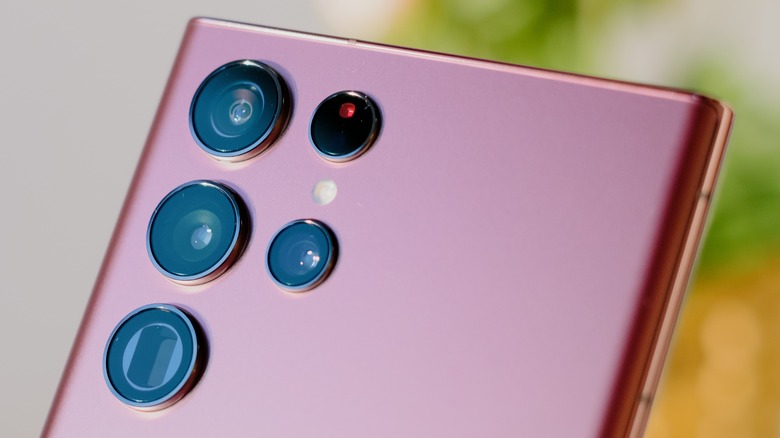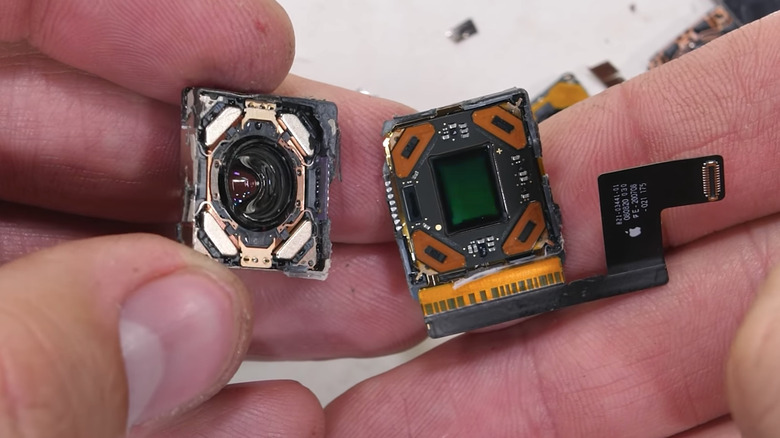Samsung May Be Chasing The Magic Behind iPhone's Video Stabilization
With the arrival of the iPhone 12 Pro Max two years ago, Apple introduced a new camera trick called "sensor-shift image stabilization," replacing the more widely used optical image stabilization (OIS) tech on smartphones. Inspired by the in-body image stabilization (IBIS) tech on professional cameras, sensor-shift image stabilization involves moving the main camera sensor board to compensate for hand movements and jitters. On the other hand, optical image stabilization requires moving only the lens assembly to stabilize the photo and video capture, while the camera sensor remains static.
Sensor-shift is known to deliver better results because it's quicker at compensation movement. From a technical standpoint, it just so happens that making motion corrections to the image data right at the processing site (aka the sensor) is more effective than deputing the duty to the lens elements. As a result, there is less blurriness, motion artifacts, and noise in the images. It is hard to quantify exactly how significant is the quality difference between sensor-shift image stabilization and optical image stabilization, but the recent 'Pro' iPhones tend to record vastly better videos compared to their Android rivals with OIS tech.
It looks like Samsung is finally going to experiment with the sensor-shift image stabilization tech for its own phones, as well. The company has filed a patent application before the World Intellectual Property Organization, detailing a camera system that includes a moving sensor assembly, which is fundamentally the same approach as a sensor-shift image stabilization tech on iPhones.
Promising, but don't hold your breath
Samsung's patent application mentions "an image stabilization assembly including a first substrate and a movable member that includes an image sensor." However, this is just a filing, which means the tech might take some time before it's seen in a` commercially available Samsung-branded smartphone. But rumors suggest that Samsung has been experimenting with it for a while now.
In 2021, it was reported that Samsung was toying with the improved stabilization technique and it just might appear on the Galaxy S22 Ultra. That didn't happen, as the Galaxy S22 Ultra sticks with the optical image stabilization technology for both the primary and telephoto zoom cameras. Rumors now suggest that the upcoming Galaxy S23 Ultra, which is expected to launch in the January-February window next year, might finally arrive rocking with the sensor-shift image stabilization gear.
In the meantime, Apple has expanded the stabilization tech to non-Pro iPhones, as well, and has also jumped to the second-gen iteration of sensor-shift tech on the iPhone 14 Pro and its Max version. Samsung is strongly rumored to be upping the pixel game next year. The Samsung Galaxy S22 Ultra, which had its alleged design schematics leaked a few days ago, might use the in-house ISOCELL HP3 camera sensor which offers a 200-megapixel image resolution.

